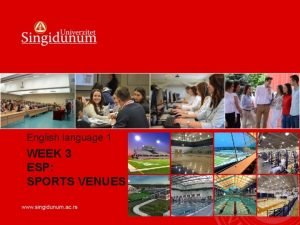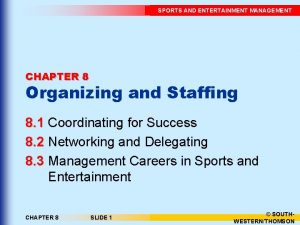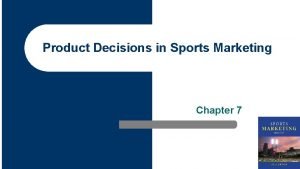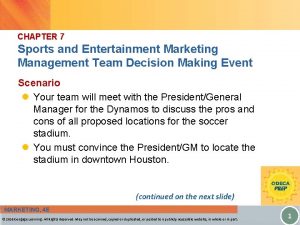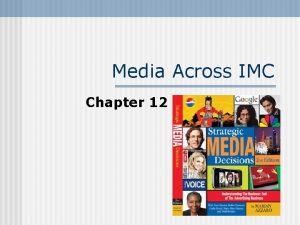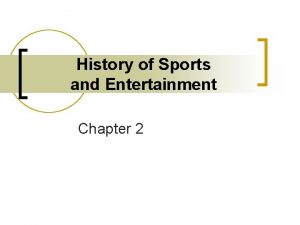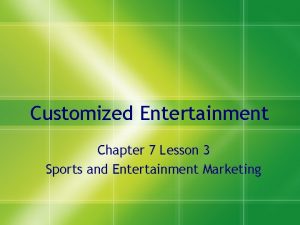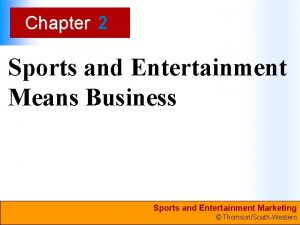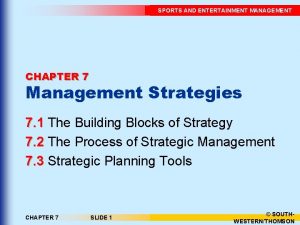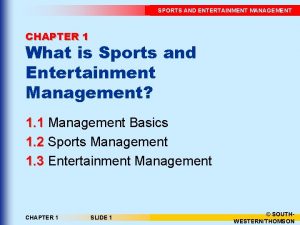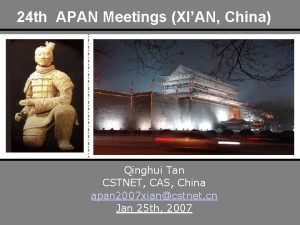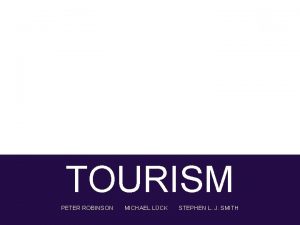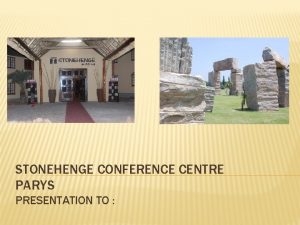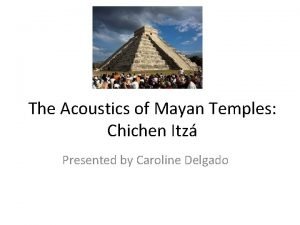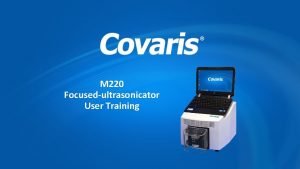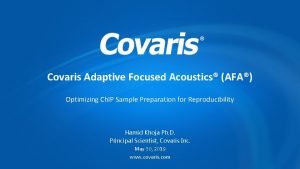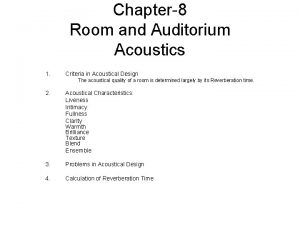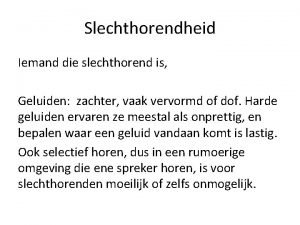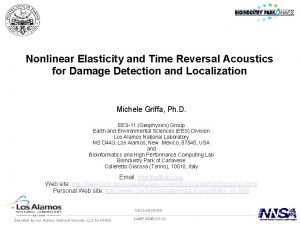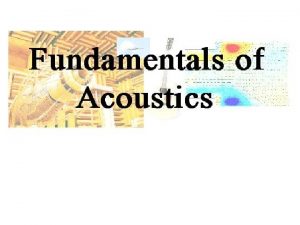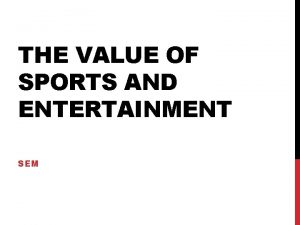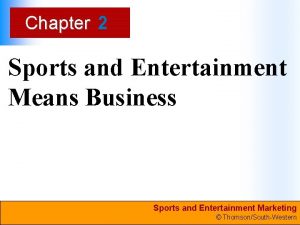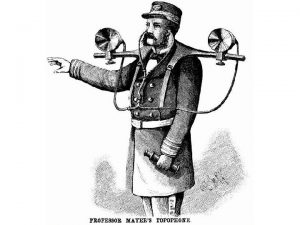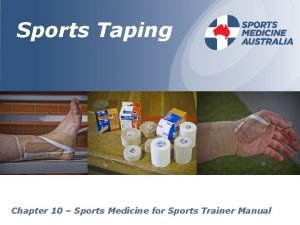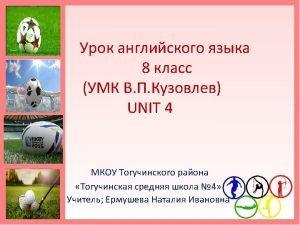ACOUSTICS OF PLACES OF ENTERTAINMENT AND SPORTS VENUES































- Slides: 31

ACOUSTICS OF PLACES OF ENTERTAINMENT AND SPORTS VENUES Draft IOA Good Practice Guide and pre-consultation forum Dani Fiumicelli

Draft IOA Good Practice Guide and pre-consultation forum Purpose To introduce the Draft Revised IOA Good Practice Guide. Hold a pre-consultation discussion forum, and. Inform consultation on the Draft IOA Good Practice Guide. www. templegroup. co. uk

Introduction • • • Rationale Scope Regulatory Framework Risk assessment Noise Assessment Examples

Draft IOA Good Practice Guide and pre-consultation forum Rationale for revision of the Co. P IOA Good practice Guide to control of noise from pubs and clubs published in 2003 Includes advice on practical ways of controlling noise, but no sound level based assessment criteria Although published in 2003 it is untroubled by any reference to the Licensing Act 2003 or to any other regulatory regime. The regulatory landscape has changed substantially since 2003. www. templegroup. co. uk

Draft IOA Good Practice Guide and pre-consultation forum Regulatory framework Development Control LOAEL & SOAEL Live Music Act 2012 & Legislative Reform Order 2014 Licensing Act 2003 (LA 03) Public Nuisance Regulatory Noise Control for Entertainment Venues Noise Act 1996 Permitted level Environmental Protection Act 1990 Anti-social Behaviour, Crime and Policing Act 2014 Alarm, Harassment or Nuisance Statutory Nuisance www. templegroup. co. uk

Draft IOA Good Practice Guide and pre-consultation forum Rationale for revision of the Co. P Experience and evidence base from which to sound level based assessment criteria might be derived has grown since 2003 However, the currently available research and existing standards and guidelines, do not provide comprehensively unifying methods or criteria, for the assessment and appraisal of noise from places of entertainment. The draft guidance is partially based on research which has been informed and augmented by accumulated experience of dealing with entertainment noise problems. www. templegroup. co. uk

Draft IOA Good Practice Guide and pre-consultation forum Scope of the Co. P The document will not be a statutorily ‘approved’ code of practice It provides examples of good practice with regards to noise from places of entertainment and similar venues. Compliance with this Guide does not necessarily confer statutory immunity, nor does it provide a defence against legal action or confirm compliance with legal duties. Variation from the advice contained within the Guide does not confirm non-compliance with legal duties. www. templegroup. co. uk

Draft IOA Good Practice Guide and pre-consultation forum Scope of the Co. P The document is not intended to provide a binding definitive statement of Best Practice. Because, any attempt at a single, prescriptive, all encompassing statement of Best Practice will fail in the many situations that would fall outside the parameters of such a narrowly constructed concept. There will be examples of Good Practice and practitioners will be free to choose such methods. However, it such a choices would have to be fully justified. Quantitative definition of the legal concept of nuisance is not possible except some times in the specific circumstances of a particular state of affairs – “Protean - tending or able to change frequently or easily. ” Instead the GPG will provide a framework for assessing the significance in policy terms of the effects of Entertainment Noise www. templegroup. co. uk

Draft IOA Good Practice Guide and pre-consultation forum Audibility The existing Co. P says…… • for premises where entertainment takes place on a regular basis, music and associated sources should not be audible inside noise-sensitive property at any time. In the absence of the objective criteria mentioned in 2. 3, what is 'regular' should be determined on a local basis to reflect local expectations and should be incorporated by local authorities in their planning and enforcement policies (see section 4); and, • for premises where entertainment takes place less frequently, music and associated sources should not be audible inside noise-sensitive property between 23: 00 and 07: 00 hours. For other times, appropriate criteria need to be developed which balance the rights of those seeking and providing entertainment, with those who may be disturbed by the noise. The existing Co. P goes on to qualify the meaning of audible as follows: • noise may be considered not audible or inaudible when it is at a low enough level such that it is not recognisable as emanating from the source in question and it does not alter the perception of the ambient noise environment that would prevail in the absence of the source in question. www. templegroup. co. uk

Draft IOA Good Practice Guide and pre-consultation forum Audibility The working group think that these existing aims regarding the audibility of entertainment noise that occurs for more than 30 days a year remain broadly applicable. This is because most entertainment noise has specific characteristics that make it easy to discern from other typical ambient noise sources e, g. • Rhythm • Prominent bass and sub-bass content e. g. below 125 hz and 63 Hz respectively. • Impulsive elements • Tones Consequently, when entertainment noise occurs regularly, and particularly after times when most people are going to sleep or are trying to sleep; unlike other more anonymous sounds e. g. road traffic noise, there can be only a small or even no gap between what constitutes NOEL, LOAEL and SOAEL. www. templegroup. co. uk

Draft IOA Good Practice Guide and pre-consultation forum Venue risk assessment matrix Confidence In Management A risk-based approach to noise management and control provides the foundation on which to base decisions. Numbers of Events This provides a proportionate level of response, management and control or enforcement in any given situation. Time of Events E. g. a pub hosting a band once a month ending before mid-night with sensitive receptors at some distance would not be treated as high a risk as a club with adjacent sensitive receptors holding events most nights of the week until the early hours of the morning. Sound Insulation performance of Venue Proximity of sensitive receptors www. templegroup. co. uk

Draft IOA Good Practice Guide and pre-consultation forum Risk assessment Criteria Risk Rating 0 Number of Events For example: • A Risk Rating of less than 10 indicates that a control criterion at the less stringent end of the proposed range is appropriate, • A Risk Rating of more than 10 but less than 20 indicates that a control criterion towards the middle of the proposed range would be appropriate, and; • A Risk Rating of more than 20 indicates that a control criterion at the more stringent end of the suggested range would be appropriate. <30 per year and no more than 1 event per week > 30 and< 51 events per year and no more than 2 per week Weekly, or more frequently Time of Event Up to 21: 00 hrs Up to 23: 00 hrs After 23: 00 hrs Noise Sensitive Receptors None in close proximity One, or more, in close proximity (e. g. up to 50 metres) Structurally adjoining Venue Sound Insulation performance Purpose built - robust sound insulation 3 6 0 Average – not purpose built but with moderate sound insulation Poor – weak sound insulation Confidence in Management 3 6 High – well-prepared NMP, no or very few noise complaints Moderate - informal controls in place, few complaints 0 3 Low - no controls, poor compliance history, history of complaints TOTAL 6 RISK RATING LOW MEDIUM HIGH <10 10 -20 20+ www. templegroup. co. uk

Draft IOA Good Practice Guide and pre-consultation forum Qualitative Assessment Scale A qualitative assessment scale is proposed that describes typical aural effects with corresponding levels of subjective impact of an average person. Both quantitative and qualitative assessment of the degree of impact, is not just dependent on how loud the noise is, it is also subject to consideration of additional factors including; • the total duration of noise generation, • the time of day or night, and; • frequency of occurrence. However, qualitative assessments on their own are open to being undermined by claims of subjective bias, inconsistency and being unrepresentative. Consequently, it is recommended that assessments based on sound level measurements are also used to provide quantified, objective evidence. www. templegroup. co. uk

Draft IOA Good Practice Guide and pre-consultation forum Qualitative Assessment Scale NOEL • No Detrimental Effect, e. g. Entertainment Noise (EN) is very faint and barely audible; concentration is required to distinguish the EN over the prevailing background noise Without Entertainment Noise (WEN); the absence of EN is more noticeable when it stops than when present, the source is not readily distinguishable. LOAEL • Lowest Detrimental Effect, e. g. Elements of the EN are distinguishable; specific lyrics are not intelligible, the bass rhythm may be the most apparent/distinguishable characteristic of the noise. EN would be masked by normal speech or internal leisure activity noise levels SOAEL • Significant Detrimental Effect, e. g. Most components of the EN are clearly audible, the bass rhythm is clear and distinct, lyrics are audible and intelligible, highly likely that onset of sleep and/or return to sleep would be delayed. UAEL • Unacceptable Detrimental Effect, e. g. EN is the dominant noise, the bass rhythm can be perceived as vibration, EN is clearly audible throughout the external and most of the internal parts of as noise sensitive receptor and interferes with speech during the day, and is likely to prevent and cause sleep deprivation at night. www. templegroup. co. uk

Draft IOA Good Practice Guide and pre-consultation forum Quantitative Assessment of Entertainment Noise The existing Co. P states: The original intention was to include objective noise criteria in this document, or in a separate but related document, that could have been used to assess and control noise from all the main sources of noise that can be present at pubs, clubs and similar premises. However, it has not been possible to subject the new criteria that have been developed and proposed by the working party to a satisfactory validation process. It is hoped that future research will lead to the publication of criteria that have been fully validated in terms of human response and have been subject to trials which confirm their practicability in terms of measurement, enforcement and use within the planning process. Until such criteria are developed, it is recommended that local authorities and others should devise and apply policies having regard to this Guide and taking into account local circumstances and existing licensing and planning policies. www. templegroup. co. uk

Draft IOA Good Practice Guide and pre-consultation forum Quantitative Assessment of Entertainment Noise Since 2003 research on the effects of entertainment noise have been published e. g. • Noise from Pubs and Clubs Final Report (Phase 1) – Defra NANR 92 • Noise from Pubs and Clubs Final Report (Phase 2) – Defra NANR 163 In addition there have been a number of planning inquiries and licensing cases where the question of how to define appropriate quantitative criteria for assessing entertainment noise has featured debate on issues such as: • The threshold of audibility e. g. +3 d. B on ISO 226/ISO 389, these 50% median averages or lower to reflect a wider range in the population • • • Broadband e. g. A and C weighting or NRs Vs 1/1 or 1/3 Octave band frequency analysis Choice of noise metric – Leq, L 10 or Lmax Penalties for character e. g. impulsive elements www. templegroup. co. uk

Draft IOA Good Practice Guide and pre-consultation forum Quantitative Assessment of Entertainment Noise Relative Approach A relative approach compares the ambient or background noise level (EN) with the same noise metric with the entertainment noise present (WEN). Typically a more stringent relative limit is set for noise that happens often or after 2300 hrs than for noise that occurs infrequently or before then. Relative criteria benefit from taking the existing noise climate in an area into account; but suffer from needing to know what the underlying noise level is, and can be difficult to measure when close to or below the WEN noise levels. Both A and C-weighted Leq, t based criteria provided relatively strong correlations with annoyance in the Defra NANR 163 research. C-weighted criteria can be more responsive to low frequency content; although little guidance exists in regard to specific benchmark control limit values which might be used with this weighting, as it has seldom been adopted in environmental acoustics. However this is not considered a limitation against using C weighting when a relative approach to assessment of entertainment noise is being taken. www. templegroup. co. uk

Draft IOA Good Practice Guide and pre-consultation forum Quantitative Assessment of Entertainment Noise Absolute Approach Absolute criteria specify fixed values which the noise level should not exceed. Consequently, assessments using such metrics do not require knowledge of the underlying noise level, but suffer from not taking into account the existing noise climate in an area, and can also be difficult to reliably measure or calculate when close to the ambient or background noise level. Typically a more stringent absolute limit is set for noise that happens often or after 2300 hrs than for noise that occurs infrequently or before then. The Defra NANR 163 research found a reasonable correlation between NR curves and the subjective assessment of entertainment noise. The same research found the NR curves based on the L 10 metric had a slightly better correlation with subjective response than those using the Leq. www. templegroup. co. uk

Draft IOA Good Practice Guide and pre-consultation forum Noise Assessment Criteria Framework Time of Day For the appropriate period (pre and post 23: 00 hrs), the residual noise level without entertainment noise (WEN) is determined at the noise sensitive receptor and rounded to the nearest decibel. This is then compared with the total noise level, including entertainment noise (EN). The difference/change between WEN and EN is the assessment criterion. Day/Eve Night External Criteria EX Range Effective LEN - LWEN Level Difference NOEL to UAEL Entertainment Noise level (EN) Leq, t min shall not increase the residual noise by more than 0 to +5 d. B AM Entertainment Noise level (EN) Leq, t min shall not increase the residual noise level by more than Internal Criteria Entertainment Noise level (EN) Leq, t min shall not increase the residual noise/ by more than 2 d. B; or shall be no greater than. Entertainment Noise level (EN) Leq, t min shall not increase the residual noise/ by more 2 d. B; or shall be no greater than. 0 to +3 d. B LEN - LWEN= -10 to +3 LEN - LWEN= -10 to 0 PL E 0 to +3 d. B Or LEN - LWEN= -10 to 0 NR 15 -30 -10 to -5 d. B Or NR 8 -25 LEN - LWEN= -10 to -5 www. templegroup. co. uk

Draft IOA Good Practice Guide and pre-consultation forum Noise Assessment Criteria Framework Where entertainment noise contains prominent low frequency “bass”, when using relative noise criteria use of C-Weighted noise limits is recommended and applied using the framework above. Although there are few standards and guidelines that use C weighting its use for relative criteria is based on the change in noise level due to entertainment noise relative to a typical baseline without entertainment noise is considered appropriate. In the past there have been proposals to use 1/1 or 1/3 octave based relative criteria to control low frequency impacts. This raises the question of establishing the typical baseline without entertainment noise. This is subject to substantial uncertainty when done on a broadband basis, which is significantly expanded when considering multiple frequency bands. Furthermore the Defra NANR 163 research did not show that 1/3 octave based criteria provided a significantly better correlation with subjective response than a broadband based approach. www. templegroup. co. uk

Draft IOA Good Practice Guide and pre-consultation forum Noise Assessment Criteria Framework It is considered unduly onerous to use the very lowest WEN level and instead a representative value should be used; • As an example, the WEN level could be the whole integer modal average i. e. the most commonly occurring value, of the WEN 5 -minute measurements during the last 2 hours of the operation of the premises without entertainment noise occurring. For existing premises where it is impracticable to stop the entertainment noise for the last 2 hours of operation, the measurement period could be based on twenty four WEN 5 -minute periods totalling 2 hours after entertainment noise at the premises has ceased but the baseline not risen compared to when the premises operates, excluding any measurements that contain noise from patrons or other sources associated with dispersal from the premises under assessment. www. templegroup. co. uk

Draft IOA Good Practice Guide and pre-consultation forum Noise Assessment Criteria Framework Similarly, it is unduly onerous to use the very highest EN level that may be measured and instead a typical value should be used; • as an example, the EN could be the whole integer value of the measurement closest to the 75 th percentile of all the 5 -minute measurements made in the last 2 hours of the operation of the premises at its highest entertainment noise levels, i. e. it does not include any “cool-down period” when MNLs might be reduced below normal operational levels. www. templegroup. co. uk

Draft IOA Good Practice Guide and pre-consultation forum Noise Assessment Criteria Framework In some circumstances when using relative criteria, Leq, T may be substituted by L 90, T. For example, in relatively quiet locations when the ambient/residual Leq, T noise levels are controlled by intermittent and occasional noise events, such as individual vehicle movements. Consequently, a more suitable approach could be to use the L 90, T metric to describe the residual noise level, as this will be more representative of the overall noise climate than the Leq, T in such circumstances. Leq Vs L 90 45 41 33 30 1 41 33 31 2 41 35 33 41 41 41 33 33 32 33 33 33 31 8 9 12 13 41 41 36 33 33 30 3 41 4 5 6 7 SPL L 90 30 10 11 34 33 14 33 32 15 Leq www. templegroup. co. uk

Draft IOA Good Practice Guide and pre-consultation forum E. g. 1 An inner city night club located within the basement (club) and ground floor (bar) of a mixed use commercial and residential block within a vibrant area of the city. The club operates until 03: 00 hrs, Tuesday to Sunday throughout the year. There are structurally adjoining residential flats on the second floor, with office space on the first floor above the bar area. There also residential properties in the vicinity and there is a small courtyard external area which currently has permission to operate until mid-night, after which time customers must come inside, this area is well managed and not a source of noise complaint. There is however a history of periodic complaint associated with music noise breakout from the rear of the club and also to structurally adjoining residential units, specifically bass beat noise. No formal action has been taken by the Local Authority, but weekend noise service officers have on occasion been called out and witnessed music noise disturbance caused by both structural noise transmission into the flats and music noise breakout from the rear of the club via the fire doors. The club has installed a music noise limiter (cut off design) but this has not been calibrated for some years and it is doubtful if it is operating effectively. There is an in-house sound system with several wall mounted speakers attached directly onto the basement walls. Informal managerial controls exist but no formal Noise Management Plan. www. templegroup. co. uk

Draft IOA Good Practice Guide and pre-consultation forum E. g. 1 risk assessment Criteria Number of Event per Year Weekly, or more frequently Time of Event After 23: 00 hrs Noise Sensitive Receptors Structurally adjoining Venue Sound Insulation performance Average – not purpose built but structurally sound Confidence in Management Moderate - informal controls in place, few complaints RISK RATING HIGH Risk Rating 6 6 6 3 3 24 www. templegroup. co. uk

Draft IOA Good Practice Guide and pre-consultation forum Case study 1 Location Time Criteria LAeq, 5 min EN minus LAeq, 5 min WEN = +3 d. BA. External Not Structurally Connected 7 am to 11 pm LCeq, 5 min EN minus LCeq, 5 min WEN = +3 d. BC. LAeq, 5 min EN minus LAeq, 5 min WEN = 0 d. BA. 11 pm to 7 am LCeq, 5 min EN minus LCeq, 5 min WEN = 0 d. BC. Internal Structurally Connected 7 am to 11 pm EN = Noise Rating NR 20 Leq, 5 mins 11 pm to 7 am EN = Noise Rating NR 10 Leq, 5 mins www. templegroup. co. uk

Draft IOA Good Practice Guide and pre-consultation forum E. g. 2 A popular rural, community-focused Public House with a function room, holds very occasional live music events and more frequently private functions with a disco such as birthday parties or anniversaries. The Premises Licence for the venue includes live and recorded music until midnight. The closest residential receptors are 100 m away. The function room is constructed from traditional brick and blockwork with roof construction of cement clay tiles on a pitched roof with additional sound insulation. There is a double door-set entrance that leads directly into the entertainment space, with large single glazed windows at the front and side of venue. There air conditioning units but these have not been working for some time and therefore windows are kept open during summer for ventilation. There is a basic in-house PA system which all DJs use. Over the past few months, the Local Authority Environmental Health Department has received complaints regarding music noise disturbance. No formal action has been taken, however the EHO has met with the Operator who is keen to work with the council and local residents to resolve any issues before they escalate as functions are the most profitable element of business. www. templegroup. co. uk

Draft IOA Good Practice Guide and pre-consultation forum Case study 2 Criteria Number of Event per Year < 30 events per year Time of Event After 23: 00 hrs Noise Sensitive Receptors None in close proximity Venue Sound Insulation performance Average – not purpose built but structurally sound Confidence in Management Low - no formal controls, history of complaints TOTAL RISK RATING MEDIUM Risk Rating 3 6 0 3 6 18 www. templegroup. co. uk

Draft IOA Good Practice Guide and pre-consultation forum Case study 2 Location Time 7 am to 11 pm Criteria LA 90, 5 min EN minus LA 90, 5 min WEN = +3 d. BA. LC 90, 5 min EN minus LC 90, 5 min WEN = +3 d. BC. External LA 90, 5 min EN minus LA 90, 5 min WEN = 0 d. BA. 11 pm to mid-night LC 90, 5 min EN minus LC 90, 5 min WEN = 0 d. BC. www. templegroup. co. uk

Draft IOA Good Practice Guide and pre-consultation forum Overview Venue Risk Assessment Noise Impact Assessment Significance Threshold Criteria & Level/s Apply Noise Controls Post Mitigation Assessment www. templegroup. co. uk

Thank you Dani Fiumicelli Temple Group Dani. fiumicelli@Templegroup. co. uk www. templegroup. co. uk
 Esp sports medicine
Esp sports medicine Sports and entertainment marketing lesson plans
Sports and entertainment marketing lesson plans Chapter 8 sports and entertainment marketing
Chapter 8 sports and entertainment marketing Sports marketing environment matrix
Sports marketing environment matrix Sports and entertainment marketing performance indicators
Sports and entertainment marketing performance indicators Examples of gross impression in sports
Examples of gross impression in sports Sports and entertainment marketing lesson plans
Sports and entertainment marketing lesson plans Imc sports and entertainment
Imc sports and entertainment Chapter 2 sports and entertainment marketing
Chapter 2 sports and entertainment marketing Chapter 7 lesson 3 help for families
Chapter 7 lesson 3 help for families Chapter 2 sports and entertainment marketing
Chapter 2 sports and entertainment marketing Chapter 2 sports and entertainment marketing
Chapter 2 sports and entertainment marketing Sports and entertainment marketing class
Sports and entertainment marketing class Sports product development
Sports product development History of sports and entertainment marketing
History of sports and entertainment marketing Chapter 7 sports and entertainment marketing
Chapter 7 sports and entertainment marketing Entertainment management definition
Entertainment management definition Now group these activity into indoor and outdoor activities
Now group these activity into indoor and outdoor activities Hokkaido
Hokkaido Conference venues coromandel
Conference venues coromandel Xian meeting venues
Xian meeting venues Lck venues
Lck venues Work immersion in barangay
Work immersion in barangay Stonehenge parys activities
Stonehenge parys activities Chichen itza acoustics
Chichen itza acoustics Adaptive focused acoustics
Adaptive focused acoustics Adaptive focused acoustics
Adaptive focused acoustics Room acoustics design criteria
Room acoustics design criteria Lawaaidoofheid gehoorapparaat
Lawaaidoofheid gehoorapparaat Hoorzaken.nl
Hoorzaken.nl Acoustics
Acoustics Lecture hall background
Lecture hall background
